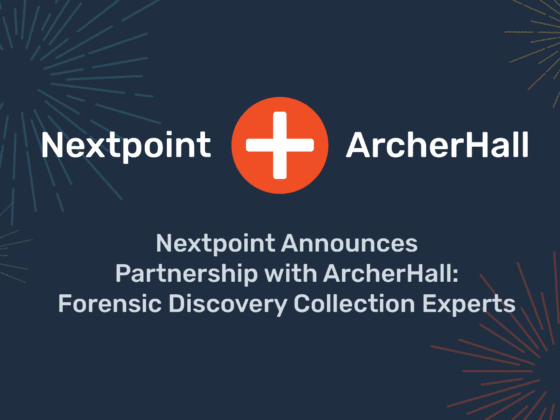This ediscovery collection checklist will guide you through the technical complexities of data collection and help your team stay organized and efficient.
The Importance of a Collection Strategy
Data collection can be the most complex and technically rigorous of all discovery phases. It involves the extraction of potentially relevant electronically stored information (ESI) from its native source into a separate, secure repository for review.
The collection process should be comprehensive without being over-inclusive. It should preserve the integrity of the data, the chain of custody and authenticity of the documents – all while not disrupting the organization or individual’s operations.
Because the collection process is data-centric, most people think of it as an IT activity. However, there’s a great deal of strategy that goes into data collection that demands both legal and technological acumen. It’s vital to assemble cross-functional, collaborative collection teams to ensure there is a properly executed collection strategy.
Data collection is a complex and dynamic process that relies on sound ediscovery strategy as well as proven technical resources and expertise. There are vital best practice guidelines demanded in each of the various stages of the collection process.
Here are four important guidelines you should adhere to:
1. Collect Only What You Need
 It may be easy to identify a relevant custodian and simply copy his/her entire hard drive, email box, or work-product folders. But easy doesn’t always equal smart.
It may be easy to identify a relevant custodian and simply copy his/her entire hard drive, email box, or work-product folders. But easy doesn’t always equal smart.
More data collected means more data to process, and ultimately to review. And that all adds up to more money spent on ediscovery. Instead, develop strong preservation and early case assessment processes, and target your collections so that you are only collecting the potentially relevant ESI – nothing more or less.
2. Be Proactive
Your goal should always be to recognize potential collection challenges early on. Inevitably, some matters will present unique collection hurdles. Mobile collection, highly disorganized data stores on legacy systems, and hidden or fragmented files all present potential challenges in collection.
It’s always in your best interest – financially and procedurally – to be proactive in assessing your needs and determining if outside resources will be needed. Even if outside assistance or experts ultimately are not needed, it’s important to give your internal IT team early notice that a big project is potentially looming, so they can plan resources accordingly.
3. Phase Your Collections
 It’s best to think of your collection process in terms of phases or tiers, rather than to try to tackle everything at once.
It’s best to think of your collection process in terms of phases or tiers, rather than to try to tackle everything at once.
In a phased collection strategy, data is prioritized so that only the highly relevant data is collected immediately. Less relevant data is collected only when absolutely needed. Remember that the only way to execute a defensible phased collection strategy is to have a very strong preservation process that does not force you into the position of having to collect everything at once.
4. Create a Master Database for ESI
Law firms often have multiple matters that revolve around the same or similar issues, people, and data. Rather than create multiple copies of the same data, create a centralized repository (like a Nextpoint database) of collected ESI and develop a systematic process for reusing that data across multiple and disparate matters.
Ediscovery Collection Checklist: Questions for Consideration
By completing the following questionnaire, you can begin crafting a collection strategy that works with both your legal and technological needs.
-
- How many parties are involved?
- What deadlines have been agreed upon?
- Have any preservation steps been taken?
- Who are your key custodians and where are they located?
- Do any identified custodians have direct IT resources available?
- What are each custodian’s key sources? (e.g. email, phone, tablet, company server, etc.)
- How accessible is each identified key source? (e.g. password protection)
- Which collection method is preferred/necessary for each source? (e.g. Self v. External v. Remote)
- Do you anticipate the authenticity of any evidence may come into question during the course of your matter?
- Is there a priority hierarchy that can be created from all identified custodians and their respective sources?
- Are there any parameters to be applied at the time of collection? (e.g. date range)
★ CLICK HERE TO DOWNLOAD THE FULL EDISCOVERY COLLECTION CHECKLIST
More Ediscovery Planning Tips
Check out the other posts in our ediscovery checklist series:
And download our comprehensive eGuide that covers everything you need to know about ediscovery collection.








